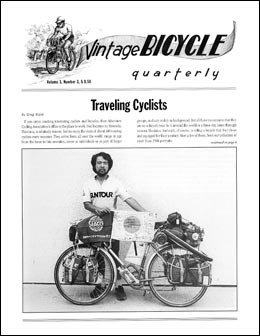
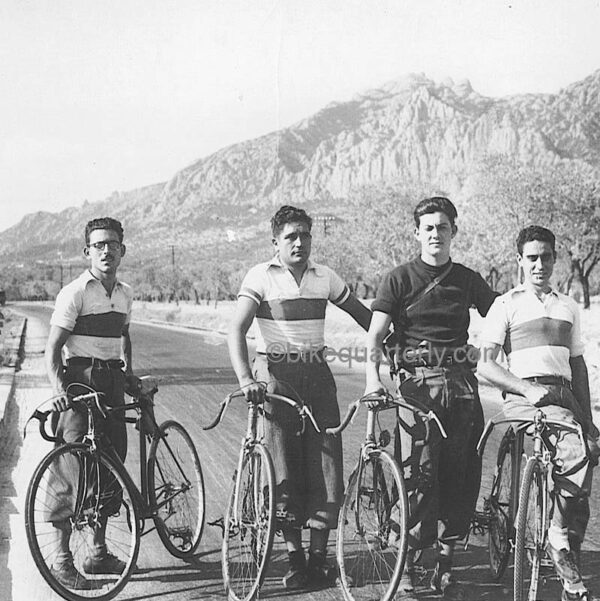
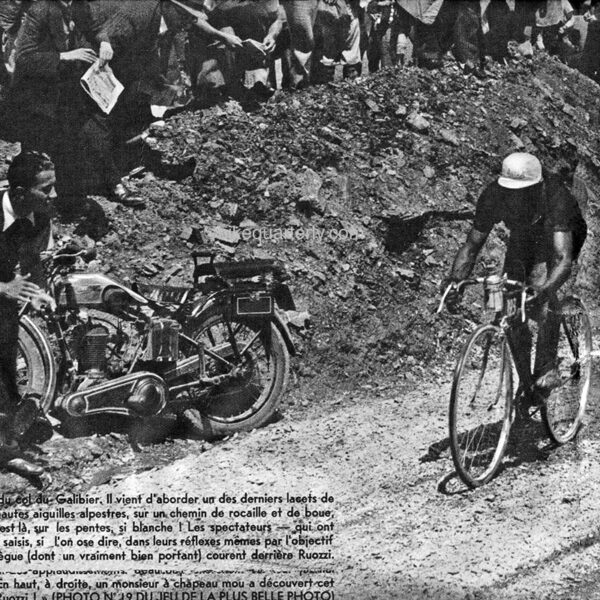
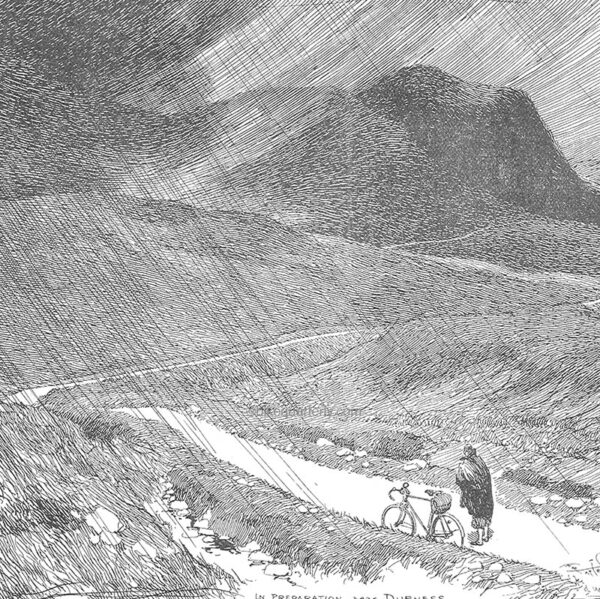
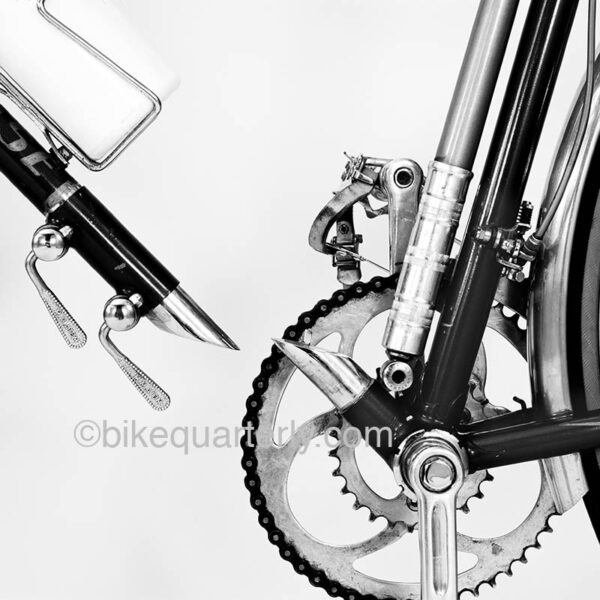
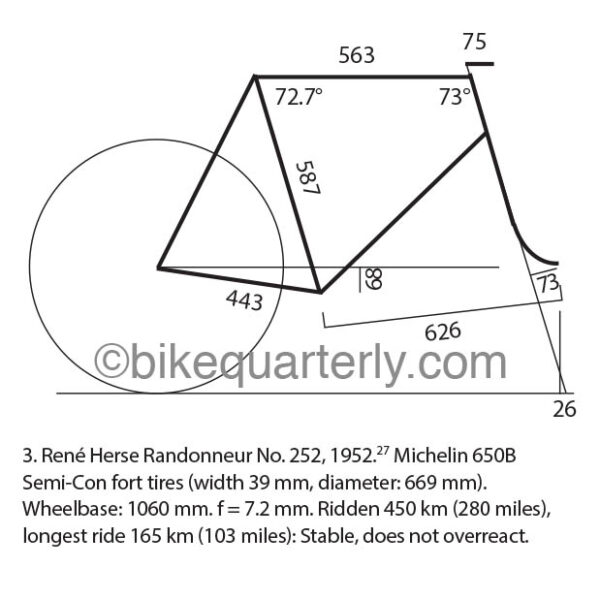

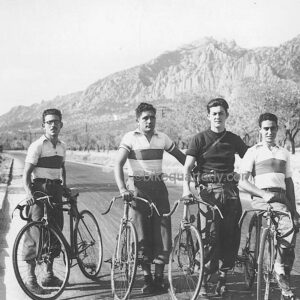

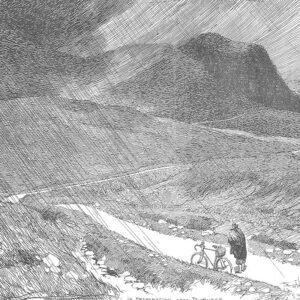
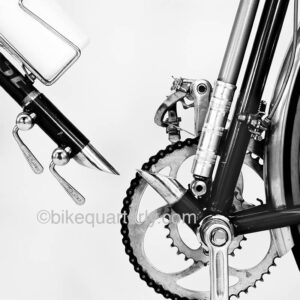
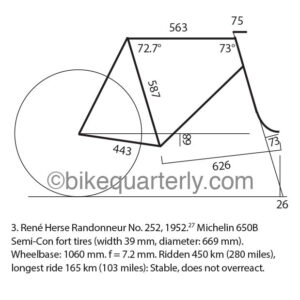
BQ 11 (Spring 2005)
$9.75
Vol. 3, No. 3
Front-End Geometry; Bicycle Touring
After riding the classic bikes of the French constructeurs, we began to wonder why they handled so well. The result was a major study of front-end geometry. To publish our findings, we had to add eight pages to this issue. For the first time, we discuss how front-end geometry needs to account for speed, tire size, load placement and riding position. We explain why low-trail bikes are so stable under tired riders, and why more trail doesn’t make a bike more stable. The revolution started here!
We also look at touring bikes and their riders. Greg Siple’s portraits of riders who passed through the Adventure Cycling headquarters show a great variety of riders. We test a CoMotion Nor’Wester with S&S couplers, as well as one of the fabled 1970s René Herse Démontable take-apart bikes. And the irrepressible Docteur Ruffier takes us on a bicycle trip in 1889, when travel still was a true adventure.


